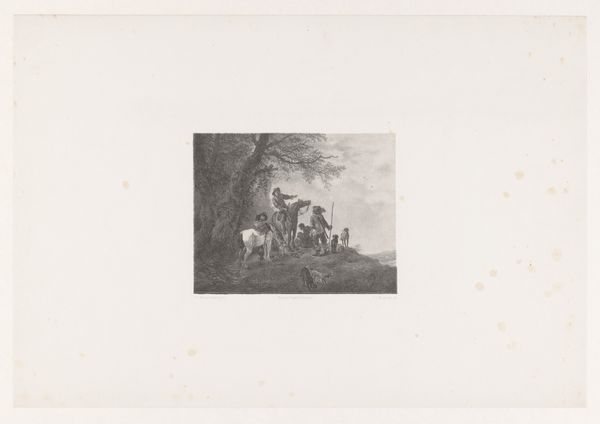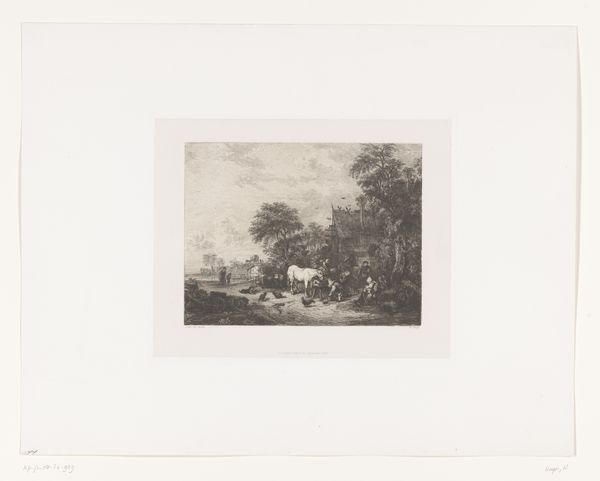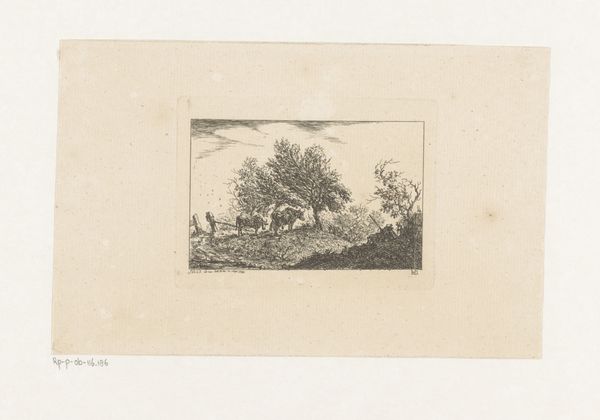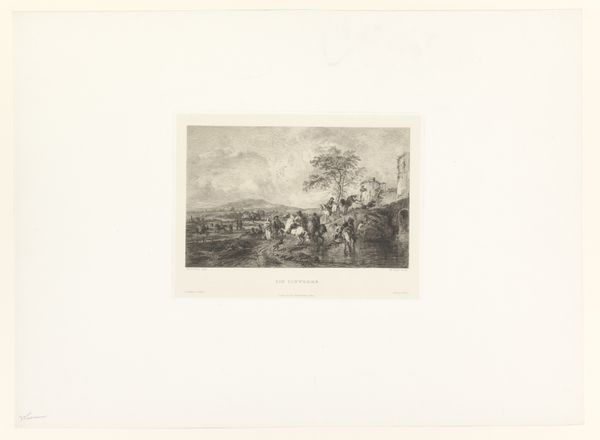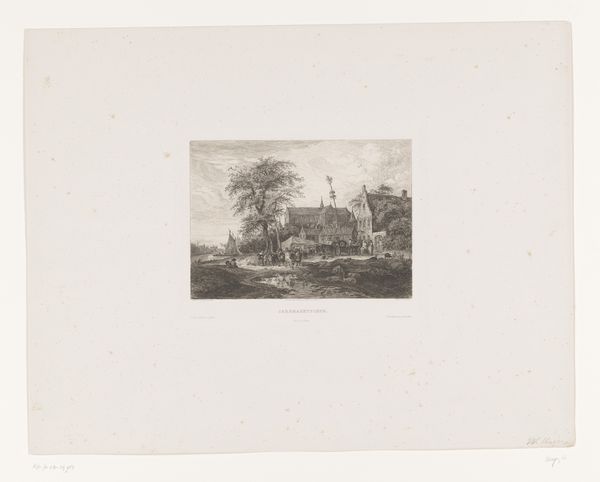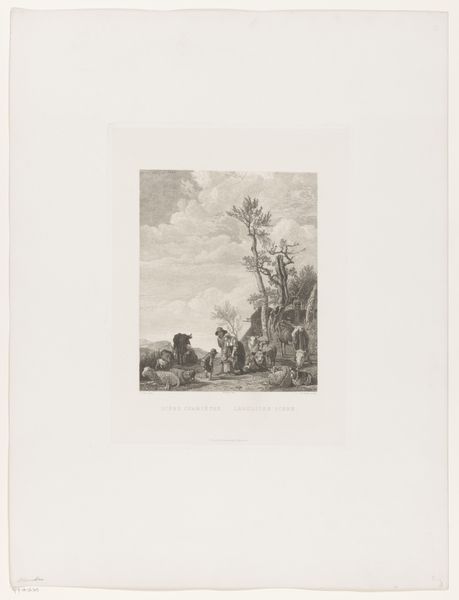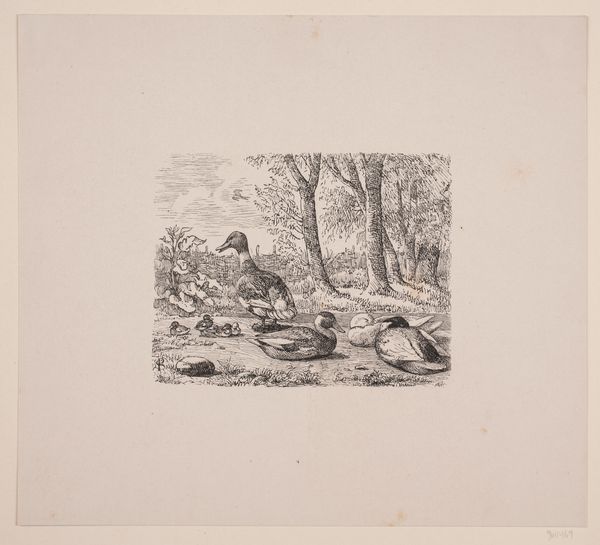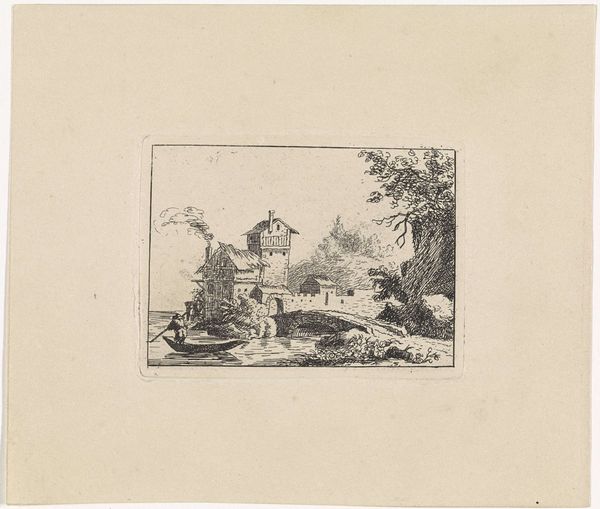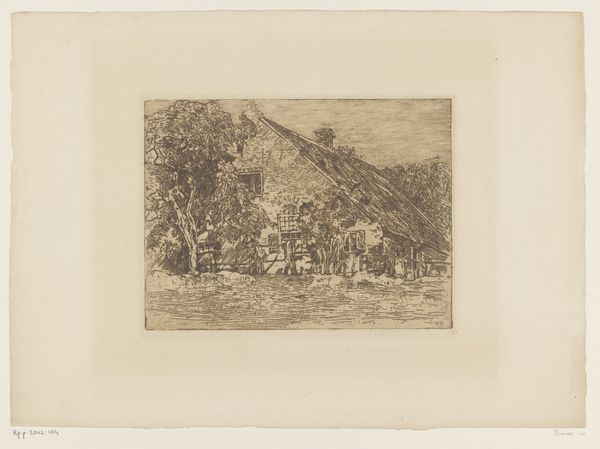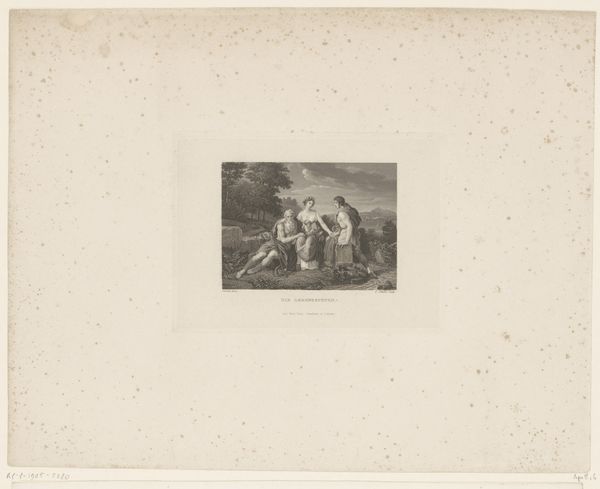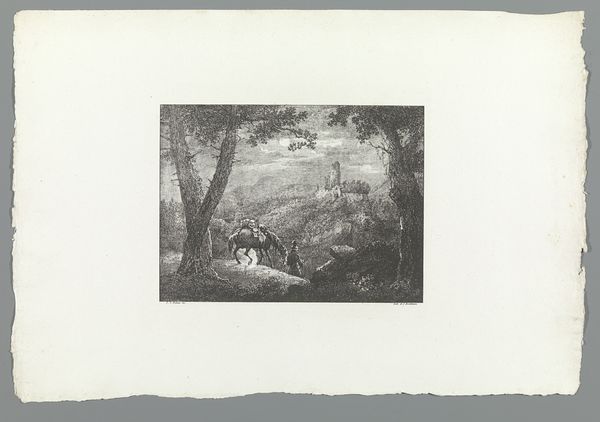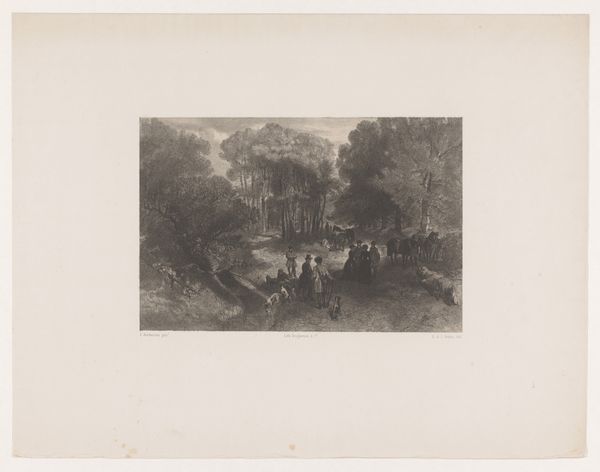
print, engraving
# print
#
dog
#
landscape
#
romanticism
#
genre-painting
#
engraving
Dimensions: height 425 mm, width 525 mm
Copyright: Rijks Museum: Open Domain
Editor: This is "Heuvellandschap met herder en kudde" (Landscape with Shepherd and Flock), an 1844 engraving by Barend Cornelis Koekkoek. It's a tranquil scene, with incredibly detailed textures in the landscape and the sheep's wool. What catches your eye when you look at it? Curator: The printmaking process itself speaks volumes. Think about the labor involved in creating these intricate lines on the plate, mirroring the labor of the shepherd depicted. The very *act* of creating this image links it to the lives represented within. Does this process elevate or aestheticize the very labor it depicts? Editor: That's a fascinating point. I hadn't considered the parallels between Koekkoek's craft and the shepherd's work. Does the mass production of the print change its social message compared to if this was a painting? Curator: Precisely! The reproducibility of printmaking suggests a broader consumption of this romanticized rural life. Who was the intended audience? Were they removed from the realities of agricultural labor? Were they consuming an idealized vision divorced from material reality? It challenges us to consider the social function of art and its potential role in shaping perceptions. Editor: It’s like a commodity of the idyllic. Thinking about it, what materials would the artist have used for the print? Curator: The copper plate itself is crucial. Where did that copper come from? How was it processed? Consider the tools, the inks... They all hold traces of their own histories and reflect broader economic and industrial networks. Editor: I guess the materials can tell many tales if you just examine the circumstances of the production and consumption of art. Curator: Absolutely. It grounds the image in a tangible world of resources and labor, adding layers of meaning we often overlook. It moves beyond the surface-level representation of a landscape. Editor: Thank you. This perspective gives me new direction for understanding the Romanticism period!
Comments
No comments
Be the first to comment and join the conversation on the ultimate creative platform.
